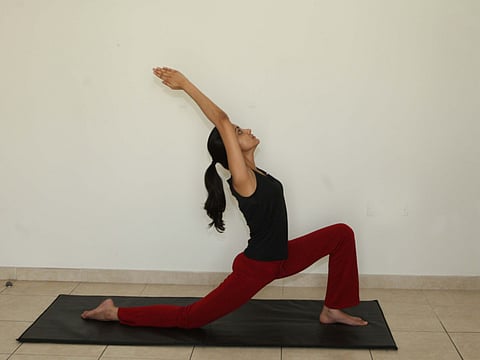Yoga: Bandhas for endocrinal health
Bharat Thakur guides you through the practices of this ancient Indian discipline

BANDHAS FOR ENDOCRINAL HEALTH
Bandhas are one of the most powerful techniques in yoga as they change the internal chemistry of the body in a fundamental way. Bandhas are neuromuscular locks performed to increase the endocrine secretions in the body.
The endocrine system is made up of glands that produce and secrete hormones. Hormones are chemical messengers that regulate the activity of cells or organs and all bodily functions. Hormones are released into the bloodstream and may affect one or several organs throughout the body. The major glands of the endocrine system include the hypothalamus, pituitary, thyroid, para thyroids, adrenals, pineal, pancreas and the reproductive organs (ovaries and testes).
A robust endocrine system ensures that the body functions at its optimum and enhances health and longevity. Our moods are also determined by the levels of hormones in our body. As a result of the direct effect that the bandhas have on the endocrine glands, many disorders and diseases can be prevented.
There are four bandhas which include jalandhara bandha (throat lock), uddiyana bandha (abdominal lock), moola bandha (root lock) and maha bandha (the great lock). We have learnt uddiyana bandha in tabloid! issue of January 23. Maha Bandha should be learnt and mastered under the guidance of a yoga teacher. Let’s understand the technique of Jalandhara bandha.
Jalandhar Bandha
The Sanskrit word jalan means net and dhara means stream or flow. One interpretation of jalandhara bandha is the lock which controls the network of blood vessels and nerves of the neck.
Sit in padmasana or vajrasana.
Place the palms on the knees. Close the eyes and relax the whole body.
Inhale slowly and deeply, and hold the breath. Bend the head forward and press the chin tightly against the chest at the jugular notch (the dip in the clavicular bone).
Straighten the arms and lock them firmly into position as the shoulders move slightly upward and forward. This will ensure that the arms stay locked, thus intensifying the pressure applied to the neck.
Stay in the final position for 10-20 seconds. Do not strain.
Relax the shoulders and slowly release the lock as you raise the head and then exhale. Repeat 3 times.
Benefits
It works on the thyroid gland and helps regulate the metabolism.
This practice increases mental relaxation, relieving stress, anxiety, anger and mood swings.
Jalandhara bandha compresses the carotid sinuses, which are located on the carotid arteries, the main arteries in the neck. These sinuses help to regulate the circulatory and respiratory systems.
It also has a powerful impact on the vishuddhi chakra which is located in the throat.
Keep in mind
People suffering from cervical spondylosis, high intracranial pressure, vertigo, high blood pressure or heart disease should avoid jalandhara bandha. Consult a yoga professional before commencing.
This bandha should be practised after asanas (postures), pranayama (breath regulation) and before meditation as it helps turn the mind inwards.
If you are unable to sit in a meditative posture, sit with your back straight on a chair to practice this bandha.
If you suffer from severe neck problem, use the fist to lock. Place the fist between the chin and chest while pressing down.
Practice of the week
Practise 10-12 sun salutations followed by the postures below.
Ardha Chandrasana
Dhanurasana
Kandharasana
Vipreeta Karni mudra
Halasana
Next week: Moola Bandha to strengthen your roots
— This is an interactive series, in which we will bring you practical tips on daily living, inspired by the vision of yoga. Write in to tabloid@gulfnews.com with your questions and doubts regarding enhancing your lifestyle through yoga. For more information, call 800-YOGA (9642) or log on to artisticyoga.com
Sign up for the Daily Briefing
Get the latest news and updates straight to your inbox



